Unlock the full potential of your business by seamlessly integrating a POS system with your website! This beginner’s guide will empower you to streamline sales, enhance customer experiences, and boost revenue. Embrace technology and watch your business thrive!
How to Integrate a POS System with Your Website: A Beginners Guide
In today’s fast-paced digital landscape, having a seamless connection between your online presence and in-store operations is more crucial than ever. If you’re a business owner looking to elevate your customer experience and streamline your operations, integrating a Point of Sale (POS) system with your website is the golden key to unlocking new levels of efficiency, insight, and growth. Imagine a world where your inventory updates in real-time, sales data is effortlessly synchronized, and customers enjoy a smooth shopping experience across all platforms. This guide is designed for beginners, transforming what may seem like a daunting task into a manageable and rewarding journey. Join us as we explore the essential steps to integrate a POS system with your website, and empower your business to flourish in the digital age. Let’s turn those dreams of efficiency and customer satisfaction into reality!
Understanding the Importance of Integrating a POS System with Your Website
Integrating a POS system with your website is not merely a technical upgrade; it’s a strategic move that can transform your business operations and enhance customer experience. When you connect your physical sales processes with your online platform, you create a seamless shopping experience that builds trust and encourages customer loyalty.
Here are a few compelling reasons why this integration is vital:
- Streamlined Operations: A unified system allows for real-time inventory management. This means your customers will see accurate stock levels online, reducing the chances of overselling and enhancing the overall shopping experience.
- Improved Customer Insights: Integrating a POS system enables you to collect and analyze valuable data regarding customer behavior, preferences, and purchasing patterns. This data can help you tailor your marketing strategies and product offerings to better meet customer needs.
- Enhanced Omnichannel Experience: Today’s consumers expect a smooth transition between online and offline shopping. By integrating your POS system, you ensure that customer interactions are consistent, whether they’re shopping in your store or on your website.
- Increased Sales Opportunities: With an integrated POS system, you can effectively manage promotions and discounts across all channels. This capability can lead to higher conversion rates and increased revenue as customers respond positively to cohesive marketing efforts.
Consider the following table that illustrates the key benefits of integrating a POS system:
| Benefit | Description |
|---|---|
| Real-Time Inventory | Accurate stock levels displayed to customers online. |
| Data Analytics | Insights into customer preferences for targeted marketing. |
| Consistent Experience | Smooth transitions between online and offline shopping. |
| Promotion Management | Unified approach to managing discounts and offers. |
Investing in a POS integration also means investing in future growth. As your business expands, a well-integrated system will scale with you, providing the flexibility necessary to adapt to changing market conditions and consumer trends. This adaptability is essential in today’s fast-paced retail environment.
integrating your POS system with your website is not just about technology; it’s about creating a holistic approach to retail that places the customer at the center of your operations. By doing so, you position your business for success and sustainable growth in an increasingly competitive marketplace.
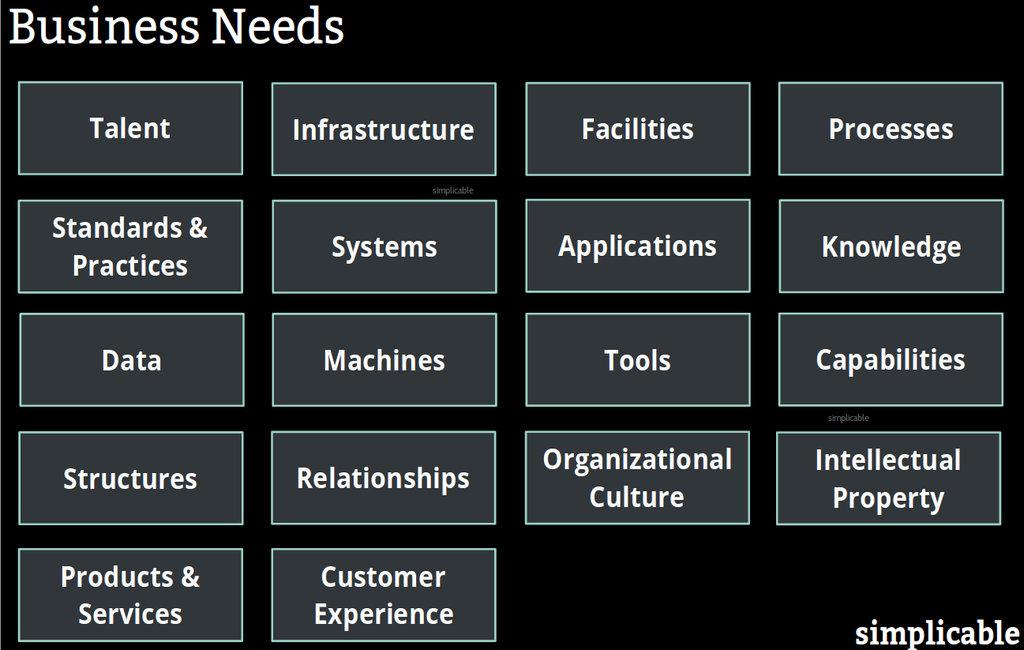
Identifying Your Business Needs for a Seamless Integration
Understanding your business needs is the first step toward a successful integration of a POS system with your website. Each business is unique, and recognizing what you aim to achieve can streamline the entire process. Begin by asking yourself the following questions:
- What are my primary business objectives? Are you looking to enhance customer experience, boost sales, or manage inventory more effectively?
- What features are essential? Do you need real-time inventory updates, multi-currency support, or integration with existing accounting software?
- Who are my target customers? Understanding their shopping habits can help tailor the POS system to meet their expectations.
Next, evaluate your current technological landscape. Are your existing systems capable of supporting a new POS integration? Consider the following:
- Compatibility: Ensure that your website platform and the POS system can communicate seamlessly.
- Scalability: Will the system grow with your business? It’s important to choose a solution that adapts as your needs change.
- Support and Training: Verify if the provider offers adequate training and ongoing support for staff.
To visualize your integration needs, create a comparison table of potential POS systems, focusing on how each aligns with your identified business objectives:
| POS System | Key Features | Price | Scalability |
|---|---|---|---|
| System A | Inventory management, multi-channel sales | $50/month | High |
| System B | Customer loyalty programs, mobile integration | $75/month | Medium |
| System C | Customizable reports, multi-currency support | $100/month | High |
define your success metrics. What does a successful integration look like for your business? Consider metrics such as:
- Sales Growth: Increased revenue from online sales.
- Customer Satisfaction: Feedback and reviews from customers post-integration.
- Operational Efficiency: Time saved in inventory management and reporting.
By clearly identifying your business needs and aligning them with the right POS system, you set the stage for a seamless integration that not only enhances your online presence but also propels your business toward future success.
Choosing the Right POS System for Your Online Store
When it comes to selecting a Point of Sale (POS) system for your online store, the choices can be overwhelming. The right system not only streamlines your sales process but also enhances the overall customer experience. Here are essential factors to keep in mind:
- Integration Capabilities: Ensure the POS system can seamlessly integrate with your existing eCommerce platform. This will minimize disruptions and allow for real-time inventory management.
- User-Friendly Interface: A simple, intuitive interface is crucial, especially if you or your staff are not tech-savvy. The easier it is to use, the quicker you can train your team.
- Payment Options: Look for a POS system that supports multiple payment methods including credit cards, mobile wallets, and even cryptocurrencies, catering to a wider audience.
- Customer Support: Opt for a provider that offers robust customer support. Having access to assistance when issues arise can save your business time and money.
- Scalability: As your business grows, your POS system should be able to scale with you. Choose a solution that can accommodate increasing sales and new features without a complete overhaul.
Consider also the following aspects when evaluating your options:
| Feature | Importance | Example System |
|---|---|---|
| Inventory Management | High | Shopify POS |
| Analytics & Reporting | Medium | Square |
| Mobile Compatibility | High | Lightspeed |
| Customer Relationship Management (CRM) | Medium | Vend |
choosing the right POS system is a pivotal step toward creating a successful online store. By focusing on these critical factors and aligning them with your business goals, you can ensure that your POS system not only meets your current needs but also positions your brand for future growth. Your journey will be smoother, allowing you to concentrate on what truly matters—delivering an exceptional shopping experience to your customers.
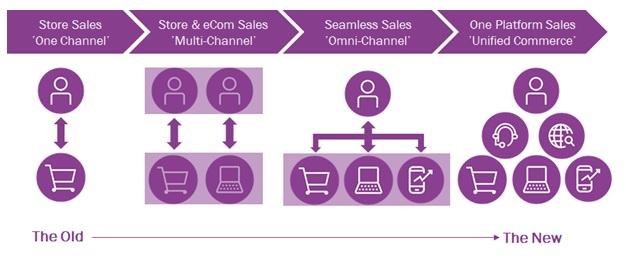
Exploring the Benefits of a Unified Sales Platform
In today’s fast-paced digital landscape, embracing a unified sales platform can transform your business operations and enhance customer experiences. By integrating your POS system with your website, you create a seamless connection between online and offline sales channels, ultimately driving profitability and customer satisfaction.
One of the primary benefits of this integration is real-time inventory management. With both systems working in harmony, you can effortlessly track stock levels, making it easy to update your website instantly. This ensures that customers have access to accurate information, reducing the risk of overselling and enhancing trust.
Moreover, a unified platform offers enhanced customer insights. By analyzing data collected from both your POS and online transactions, you gain a comprehensive understanding of customer preferences and purchasing behaviors. This information empowers you to tailor marketing strategies and promotions, leading to increased conversions and customer loyalty.
Consider the advantage of streamlined operations. With a single platform, you eliminate the need for manual data entry and reconciliation between systems. This not only saves time but also minimizes errors, allowing your team to focus on what truly matters—growing your business and delighting customers.
The financial implications of a unified sales platform are also compelling. By consolidating transactions, you can gain better control over your cash flow and reporting processes. Having all sales data in one place simplifies accounting and provides a clearer picture of your business’s financial health, which is crucial for making informed decisions.
| Benefit | Description |
|---|---|
| Real-Time Inventory | Instant updates across all sales channels |
| Customer Insights | Data-driven strategies for targeted marketing |
| Streamlined Operations | Reduced manual tasks and errors |
| Financial Control | Improved cash flow and reporting |
integrating your POS with your website offers an enhanced customer experience. Customers appreciate the convenience of shopping online and in-store with a consistent process, whether they’re checking in-store availability or returning items purchased online. A unified system creates a cohesive brand experience that fosters loyalty and drives repeat business.
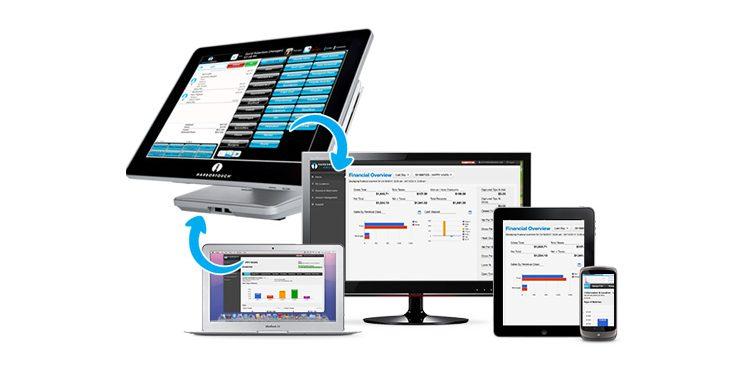
Preparing Your Website for POS Integration
Before diving into the technical aspects of POS integration, it’s crucial to lay a solid foundation for your website. A well-prepared website not only streamlines the integration process but also enhances user experience and boosts your business’s overall efficiency. Here are some essential steps to consider:
- Assess Your Current System: Evaluate your existing website’s architecture and identify its strengths and weaknesses. Knowing what works and what needs improvement will guide your integration strategy.
- Choose the Right POS System: Research various POS systems that align with your business goals. Consider factors such as compatibility, user reviews, and the specific needs of your industry.
- Ensure Mobile Responsiveness: With a growing number of online transactions occurring on mobile devices, ensure your website is fully responsive. This not only enhances user experience but is also crucial for effective POS integration.
Next, it’s important to focus on the technical setup of your website. This includes:
- Secure Your Website: Implement SSL certificates to ensure all transactions are secure. This not only builds trust with your customers but is also a critical requirement for POS integration.
- Optimize Load Times: A slow website can deter potential customers. Use tools to analyze your site speed and implement optimizations where necessary. Faster load times can significantly enhance the checkout experience.
- Update Your CMS and Plugins: Keeping your content management system and any relevant plugins updated minimizes security risks and compatibility issues with the POS system.
Another vital aspect is data management. Consider the following:
- Data Structure: Organize your product listings and customer data effectively. A clear structure will facilitate smoother integration with your POS system.
- Backup Your Data: Always have a backup of your current website data before proceeding with any integration. This precaution will safeguard you against potential data loss during the transition.
Lastly, preparing for ongoing maintenance is crucial. Regular updates and monitoring will ensure your integration remains seamless. Establish a protocol for:
| Maintenance Task | Frequency |
|---|---|
| Software Updates | Monthly |
| Data Backup | Weekly |
| Performance Reviews | Quarterly |
By taking these preparatory steps, you’ll not only streamline the POS integration process but also set your business up for long-term success. The goal is to create an ecosystem where your website and POS system work harmoniously, allowing you to focus on what truly matters: growing your business and delighting your customers.
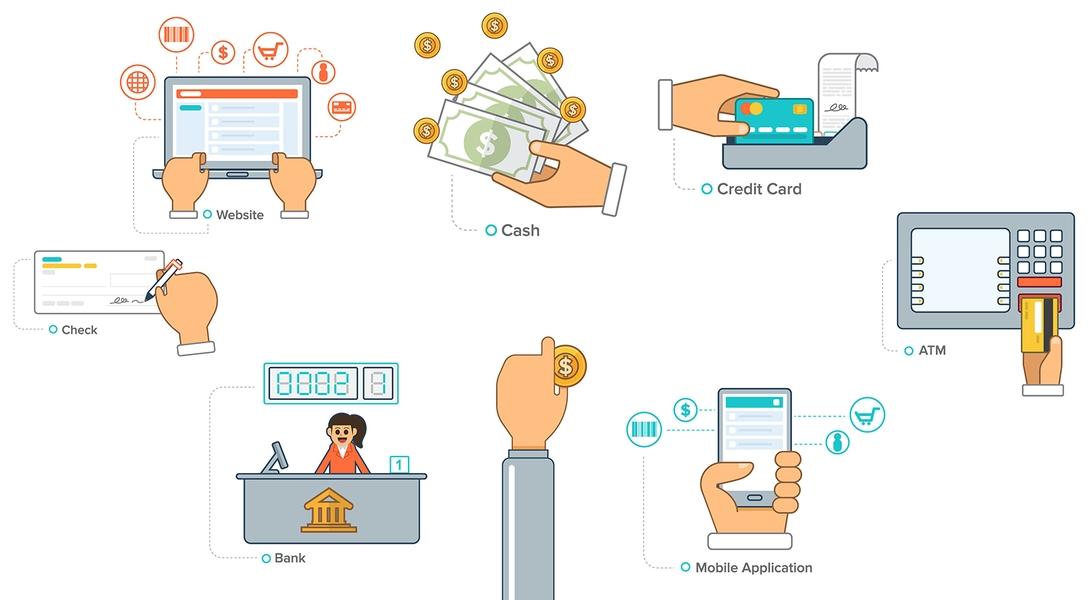
Step-by-Step Guide to Connect Your POS System to Your Website
Integrating your POS system with your website can streamline your operations and enhance customer experience. With the right approach, you’ll find that the connection can be straightforward and incredibly beneficial. Here’s how to proceed:
- Choose Compatible Software: Ensure that both your POS system and website platform can communicate effectively. Popular combinations include Shopify with Square, WooCommerce with Lightspeed, and Wix with Vend.
- Set Up API Access: Most modern POS systems offer API access. Visit your POS system’s developer documentation to generate API keys. This step is crucial, as it allows your website to fetch and send data.
- Install Necessary Plugins: If you’re using platforms like WordPress, check for plugins that facilitate integration. Plugins can automate a lot of the setup process and reduce the need for coding.
- Create Webhooks: Webhooks enable real-time data transfer between your POS system and website. Configure them according to your business needs, ensuring that essential data like inventory and sales updates flow seamlessly.
Once you have everything set up, it’s time to test the integration:
- Run Test Transactions: Perform various transaction tests to ensure that data is being accurately transmitted between the systems. Check for discrepancies in inventory levels and sales reports.
- Monitor Performance: After launching the integration, keep an eye on performance metrics. Look for any lag in data updates or errors that might arise, and address them promptly.
For those looking for a clearer picture, consider summarizing key integration points in a table:
| Integration Aspect | Importance | Best Practices |
|---|---|---|
| API Access | Necessary for communication | Keep keys secure and updated |
| Plugins | Simplifies integration process | Choose well-rated, updated plugins |
| Testing | Ensures functionality | Regularly conduct transaction tests |
By following these steps, you’re setting the foundation for a more efficient business operation. A well-integrated POS system and website can enhance inventory management, provide real-time analytics, and improve customer satisfaction. Take the leap and watch your business flourish!
Optimizing User Experience with Integrated Payment Solutions
Streamlining Your Transactions
Integrating a POS system with your website brings a plethora of advantages that can significantly enhance user experience. Customers today expect seamless, efficient transactions, and a well-integrated payment solution can deliver just that. By providing users with multiple payment options directly through your site, you make shopping more convenient, thereby increasing customer satisfaction and loyalty.
Key Benefits of Integrated Payment Solutions
- Faster Checkout Process: Reduce the number of steps necessary to complete a purchase, minimizing cart abandonment.
- Improved Security: Integrated systems often come with advanced security features, ensuring your customers’ data is safe.
- Real-Time Inventory Management: Automatically sync your online and in-store inventories, preventing overselling.
- Detailed Reporting: Gain insights through consolidated sales data from both your website and physical store.
Choosing the Right Payment Gateway
Before you can enjoy the benefits of an integrated POS system, selecting the right payment gateway is crucial. Here’s what to consider:
- Transaction Fees: Evaluate the cost associated with each transaction to ensure it aligns with your budget.
- User Experience: Opt for gateways known for their user-friendly interfaces that keep customers engaged.
- Integration Capabilities: Ensure compatibility with your existing website and POS hardware.
Implementation Steps
Once you’ve chosen a payment gateway, the integration process can begin. Here’s a simple breakdown:
| Step | Description |
|---|---|
| 1. Sign Up | Create an account with your chosen payment gateway. |
| 2. Gather API Keys | Obtain the necessary API keys for integration. |
| 3. Configure Settings | Set up payment options and currency preferences. |
| 4. Test Transactions | Run test transactions to ensure everything functions smoothly. |
| 5. Go Live | Launch the integrated system and start accepting payments! |
Enhancing Customer Trust
By integrating a reliable POS system, you’re not just streamlining payments; you’re also building trust. A secure and efficient checkout process reassures customers, encouraging them to return for future purchases. Consider displaying security certifications and accepted payment methods prominently on your site to further enhance this trust.
Conclusion
By optimizing user experience through integrated payment solutions, you position your business for growth in an increasingly digital marketplace. Remember, the ultimate goal is to create a frictionless experience that turns first-time visitors into loyal customers.

Ensuring Security and Compliance in Your Integration Process
When integrating a POS system with your website, prioritizing security and compliance is essential to protect sensitive customer data and maintain trust. The integration process can be complex, but with the right measures in place, you can ensure a seamless and secure experience for both your business and your customers.
Understand Regulatory Requirements: Familiarize yourself with the regulations that govern payment processing in your region. This includes:
- PCI DSS Compliance: Ensure your integration meets the Payment Card Industry Data Security Standard to protect cardholder information.
- GDPR Compliance: If you handle data from European customers, adhere to the General Data Protection Regulation for data privacy.
- Local Laws: Be aware of any specific local laws that may impact how you collect and handle personal information.
Secure Data Transmission: Data security starts with how information is transmitted between your website and the POS system. Implement the following practices:
- SSL Certificates: Use Secure Sockets Layer (SSL) certificates to encrypt data transmitted over the internet.
- Tokenization: Employ tokenization to replace sensitive card information with unique identifiers, reducing the risk of exposure.
- Regular Security Audits: Conduct frequent audits and penetration tests to identify and rectify vulnerabilities.
Implement Access Controls: Restrict access to sensitive information to only those who need it. This can include:
- User Role Management: Define user roles and permissions within your POS system to limit access based on job functions.
- Multi-Factor Authentication: Strengthen access controls by requiring multiple forms of verification for users accessing sensitive areas.
Monitor and Respond: Establish a system for continuous monitoring of transactions and potential security breaches. Consider:
- Real-Time Alerts: Set up notifications for suspicious activities to allow for immediate response.
- Incident Response Plan: Develop a clear plan for addressing security incidents to minimize damage and restore operations quickly.
By incorporating these best practices into your integration process, you not only enhance the security of your transactions but also build confidence among your customers. A secure and compliant POS integration is not just a technical necessity; it’s a cornerstone of your brand’s reputation and customer loyalty.
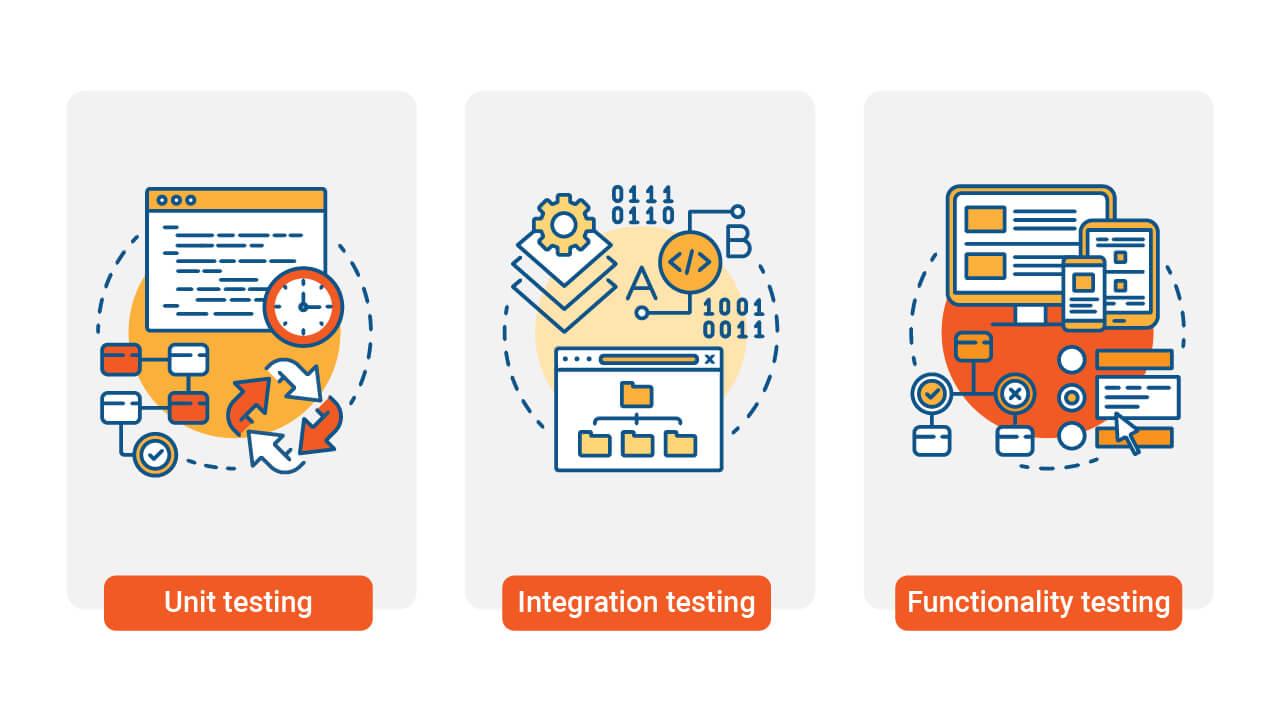
Testing Your Integration for Flawless Performance
Once you’ve integrated your POS system with your website, the next critical step is to test your integration thoroughly. This ensures that every component of your system works harmoniously, providing a seamless experience for your customers and maintaining your business’s credibility.
Begin by conducting basic functionality tests. Check if transactions are processed correctly and if the data syncs in real-time between your website and the POS system. Ensure that:
- Items added to the cart reflect accurately in the POS system.
- Payments are processed smoothly without errors.
- Inventory levels are updated immediately after a sale.
Next, perform user experience testing. Put yourself in your customers’ shoes and navigate through the purchasing process. Consider the following:
- Is the checkout process intuitive?
- Are there any delays or glitches during the payment process?
- Do customers receive confirmation emails promptly?
It’s also essential to test the security measures in place. With sensitive customer information at stake, you must ensure that:
- All data is encrypted during transactions.
- Access controls are implemented properly.
- Your website complies with PCI DSS standards.
| Test Type | Description | Tools/Methods |
|---|---|---|
| Functionality Testing | Check if all functions operate as expected. | Manual testing, Automated scripts |
| User Experience Testing | Evaluate ease of use from a customer perspective. | User feedback, A/B testing |
| Security Testing | Ensure that data protection measures are effective. | Security audits, Penetration testing |
After executing these tests, gather feedback from real users. Their insights can reveal areas for improvement that you might have missed. Remember, the goal is not just to make the integration work, but to make it work exceptionally well.
keep in mind the importance of ongoing monitoring. Once your POS system is integrated and thoroughly tested, regular audits and updates will ensure that your system remains efficient and secure, fostering a positive shopping experience for your customers.

Training Your Team to Use the New System Effectively
Once your new POS system is integrated into your website, the next crucial step is to ensure that your team is well-equipped to utilize it effectively. With the right training, your employees can harness the full potential of the system, boosting productivity and enhancing customer satisfaction. Here are some impactful strategies to empower your team:
- Comprehensive Training Sessions: Organize hands-on training sessions that cover the system’s features, functionalities, and best practices. These sessions should be interactive, allowing team members to ask questions and engage with the technology directly.
- Create a Resource Hub: Develop a centralized online resource hub where team members can access training materials, FAQs, and video tutorials. This resource will serve as a go-to reference point, enabling staff to refresh their knowledge whenever necessary.
- Encourage Peer Learning: Foster a culture of collaboration by encouraging team members to share tips and tricks they discover while using the system. Establish buddy systems where experienced users can mentor newer staff, creating an environment of shared knowledge.
- Regular Feedback Sessions: Schedule regular meetings to gather feedback on the system’s usability. This feedback loop not only helps identify areas for improvement but also makes team members feel valued and heard.
To track progress and ensure your team feels confident using the new system, consider implementing a performance review table. This can help identify individual strengths and areas that may need further training:
| Team Member | Training Completed | Confidence Level | Additional Support Needed |
|---|---|---|---|
| Jane Doe | Yes | High | No |
| John Smith | Yes | Medium | Resource Hub Access |
| Alice Johnson | No | Low | One-on-One Training |
Incorporating these practices will not only elevate your team’s capabilities but will also instill a sense of ownership and pride in their work. When employees feel competent and confident in using the new POS system, they are more likely to provide superior service and drive sales. Remember, investing in your team’s training is an investment in your business’s success.
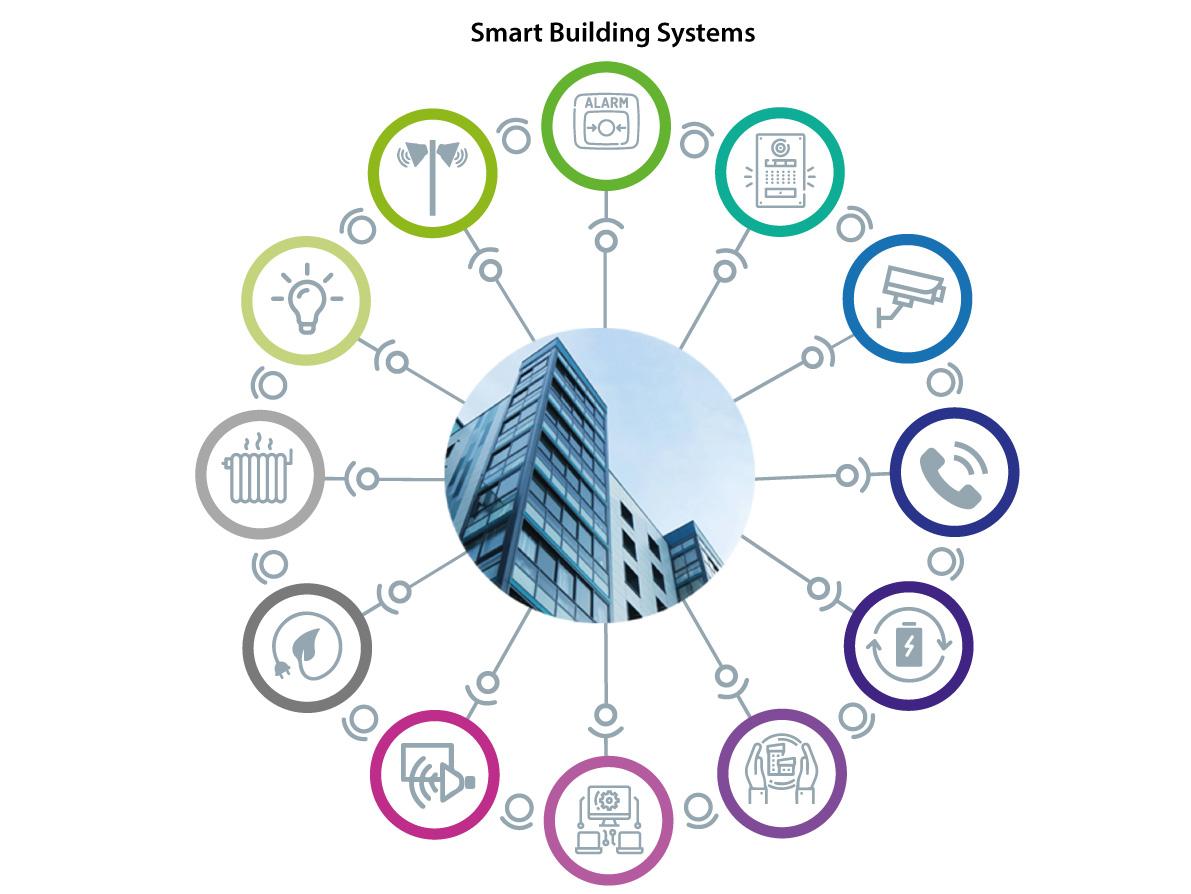
Monitoring and Maintaining Your Integrated System
Once your POS system is integrated with your website, the journey doesn’t end there. Continuous monitoring and maintenance are crucial to ensure that everything operates smoothly and efficiently. This is where the real value of your integrated system shines, as it allows you to leverage data while enhancing customer experience.
Regular Monitoring of your integrated system is essential. This involves:
- Performance Checks: Regularly assess the speed and reliability of transactions to identify any bottlenecks.
- Data Accuracy: Ensure that all data transferred between your POS and website is accurate and up-to-date.
- Error Tracking: Implementing monitoring tools can help quickly identify errors in real-time, allowing for prompt resolution.
Additionally, it’s vital to keep your system updated. Consider the following:
- Software Updates: Regularly check for and install updates to your POS software and website platform.
- Security Patches: Protect sensitive customer data by ensuring all security patches are applied promptly.
- Feature Enhancements: As customer needs evolve, keep an eye on new features that can improve functionality.
| Maintenance Task | Frequency | Importance |
|---|---|---|
| Transaction Audits | Monthly | High |
| Backup Data | Weekly | Critical |
| Customer Feedback Review | Quarterly | Moderate |
Don’t forget the human element in your monitoring process. Engaging with your team can provide valuable insights into the system performance. Encourage feedback from employees who interact with the system daily, as they can identify issues and suggest improvements that may not be immediately obvious.
maintaining a proactive stance will set you apart. Regularly evaluate your system’s performance against your business goals. This not only ensures that you are meeting customer expectations but also positions your business for growth in an ever-evolving digital landscape.
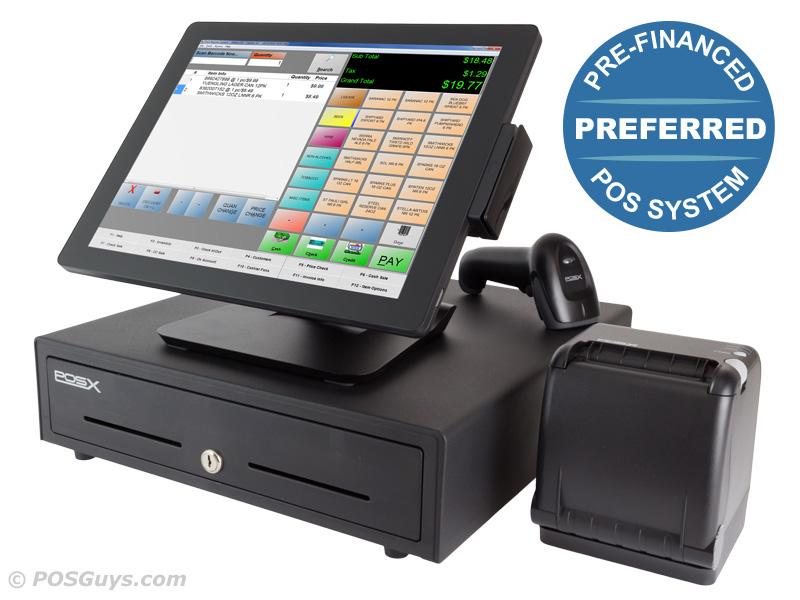
Leveraging Data from Your POS for Better Business Insights
Integrating your Point of Sale (POS) system with your website can unlock a world of insights that can significantly enhance your business strategies. By leveraging the data generated from your POS, you can gain a clearer understanding of your customers, sales trends, and inventory management, allowing you to make informed decisions that can drive growth.
Here are some key benefits of harnessing your POS data:
- Customer Behavior Analysis: Monitor purchasing patterns to tailor your marketing efforts and product offerings.
- Sales Performance Tracking: Identify peak sales times and popular products, enabling you to optimize staffing and inventory levels.
- Inventory Management: Streamline stock levels by analyzing sales data, reducing waste, and ensuring you have the right products available.
To effectively utilize your POS data, consider implementing the following strategies:
- Regular Data Review: Schedule consistent reviews of your sales reports and analytics to catch trends early.
- Integration with Analytics Tools: Use tools like Google Analytics or specialized retail analytics software to visualize data in impactful ways.
- Customer Feedback Loop: Engage with customers to gather insights beyond sales data, enriching your understanding of their preferences.
Another powerful aspect of integrating your POS with your online presence is the ability to create a comprehensive dashboard that displays all relevant metrics in one place. This dashboard can include:
| Metric | Example Insights |
|---|---|
| Total Sales | Identify high-performing products and times of day. |
| Customer Retention Rate | Measure loyalty and effectiveness of marketing efforts. |
| Stock Turnover Rate | Assess efficiency in inventory management. |
By transforming raw data into actionable insights, you empower your business to adapt quickly and strategically to market demands. The integration of your POS with your website not only provides you with a competitive edge but also enhances customer satisfaction through improved service and product availability.

Future-Proofing Your Integration for Scalability and Growth
As your business expands, the need for a scalable integration between your POS system and website becomes increasingly crucial. To remain competitive, it’s essential to adopt flexible solutions that can grow alongside your operations. By focusing on future-proofing your integration, you ensure that your system can adapt to evolving market demands and technological advancements.
Consider the following strategies to enhance your integration’s scalability:
- Cloud-Based Solutions: Utilizing cloud technology allows your system to scale effortlessly. With cloud integration, you can manage increased data flow and user requests without investing in additional hardware.
- API-First Approach: An API-driven integration offers modularity, making it easier to add new features or connect with third-party services as your business needs change.
- Robust Data Management: Ensure your database can handle increased transaction volumes and diverse data sources. Implementing a well-structured database will facilitate efficient data retrieval and processing.
- Regular Updates and Maintenance: Keep your software updated to incorporate the latest features and security measures. Regular maintenance checks will help you catch issues before they escalate into larger problems.
Moreover, consider the following key aspects of your integration architecture:
| Aspect | Description |
|---|---|
| Flexibility | Ensure the integration can accommodate changes in product offerings or business models. |
| Interoperability | Choose systems that easily communicate with other tools and platforms, boosting efficiency. |
| Performance Monitoring | Implement tools to monitor system performance and user experience to identify areas for improvement. |
In an ever-evolving landscape, it is vital to remain proactive rather than reactive. By implementing these strategies, you’ll create a resilient integration that not only supports your current operations but also prepares you for unexpected growth opportunities.
Ultimately, embracing a scalable POS integration is not just about surviving in the marketplace; it’s about thriving and seizing future opportunities. A well-planned integration sets the stage for innovation, allowing your business to adapt, grow, and excel in a competitive environment.

Embracing Innovation: The Next Steps After Integration
As you stand at the intersection of technology and commerce, fully integrating your POS system with your website unlocks a realm of possibilities that can propel your business to new heights. The journey doesn’t stop at integration; it is merely the first step towards embracing a culture of continuous innovation. By leveraging your integrated system, you can enhance customer experiences, streamline operations, and uncover valuable insights.
Once your POS is successfully integrated, consider the following strategies to capitalize on this advancement:
- Utilize Real-Time Data: Harness the power of real-time sales and inventory data to make informed decisions. This not only optimizes stock levels but also allows you to anticipate customer demands.
- Enhance Customer Engagement: Use customer purchase history to personalize marketing efforts. Craft tailored promotions and loyalty programs that resonate with individual shoppers, fostering brand loyalty.
- Streamline Operations: Take advantage of automation features that minimize manual tasks. By automating inventory updates and sales reporting, you can refocus your efforts on strategic growth initiatives.
Moreover, investing in analytics tools can further amplify the benefits of your integrated POS system. By analyzing customer behavior and sales trends, you can make data-driven decisions that enhance your marketing strategies and product offerings. Consider setting up a dashboard that consolidates these insights for easy access and real-time decision-making.
| Key Benefits | Description |
|---|---|
| Improved Customer Satisfaction | Personalized services and faster checkouts lead to happier customers. |
| Increased Efficiency | Automated processes reduce time spent on manual tasks. |
| Better Inventory Management | Real-time data helps prevent stockouts and overstock situations. |
| Enhanced Marketing Strategies | Insights into consumer behavior allow for targeted campaigns. |
Lastly, do not underestimate the power of community and collaboration. Engage with other business owners who have undergone similar integrations. Sharing experiences can yield valuable insights and foster partnerships that drive innovation. Attend industry conferences, webinars, or local meetups to stay ahead of the trends and technologies shaping the retail landscape.
Embracing innovation means staying adaptable. Regularly assess your integrated system’s performance and seek opportunities for enhancements. Whether it’s integrating new payment methods or exploring advanced analytics, your commitment to innovation will ensure your business remains competitive and poised for success.
Frequently Asked Questions (FAQ)
Q&A: How to Integrate a POS System with Your Website – A Beginner’s Guide
Q1: Why should I integrate a POS system with my website?
A1: Integrating a POS system with your website isn’t just a technical upgrade; it’s a game-changer for your business. Imagine having real-time data at your fingertips, creating a seamless shopping experience for your customers, and ultimately boosting your sales. By merging online and offline sales, you empower your business to operate more efficiently, reduce errors, and enhance customer satisfaction. This integration is the bridge to a more organized, tech-savvy future for your business!
Q2: What are the first steps I should take to begin this integration?
A2: Starting the journey of integration is easier than you might think! Begin by assessing your current POS system and website platform. Do they offer built-in integrations or compatible plugins? Conduct thorough research to find solutions that best meet your needs. Don’t forget to outline your goals; whether it’s simplifying inventory management or enhancing customer experiences, having clear objectives will guide your integration process.
Q3: Can I integrate my POS system even if I have no technical background?
A3: Absolutely! Many modern POS systems and website platforms are designed with users like you in mind. They often provide step-by-step guides, user-friendly interfaces, and customer support to help you along the way. Embrace the learning curve—this is an opportunity to expand your skills and knowledge! Remember, every expert was once a beginner, and your efforts will pay off in the form of a more efficient and profitable business.
Q4: What features should I look for in a POS system for successful integration?
A4: When choosing a POS system, look for features that align with your business vision. Key attributes to consider include cloud-based functionality for easy access, real-time inventory tracking, customer relationship management tools, and seamless payment processing options. Additionally, ensure that the system can integrate smoothly with your website platform. The right POS system will serve as a powerful ally, helping you harness data and streamline operations to drive success.
Q5: How can I ensure a smooth integration process?
A5: Planning is key! Start with a comprehensive checklist of all necessary steps, from initial setup to testing the system. Make sure to back up your data before you begin, and consider setting aside dedicated time for this project to minimize disruptions. Don’t hesitate to reach out to support teams for guidance, and involve your team in the process to foster a sense of ownership and collaboration. Celebrate small victories along the way—each step brings you closer to a fully integrated system!
Q6: What benefits can I expect after integrating my POS with my website?
A6: The benefits are truly transformative! Once integrated, you’ll experience smoother transactions, improved inventory management, and enhanced customer insights. Your team will have access to accurate, real-time data that empowers them to make informed decisions. Customers will enjoy a more seamless shopping experience, leading to increased loyalty and repeat business. Ultimately, this integration will not just streamline your operations; it will inspire growth and innovation, positioning your business for a brighter future!
Q7: What if I encounter challenges during the integration process?
A7: Challenges are a natural part of any journey, but they don’t have to deter you! Approach obstacles with a problem-solving mindset. Utilize online forums, reach out to customer support, or connect with fellow business owners who have gone through similar processes. Remember, every challenge is an opportunity for growth and learning. The key is to stay resilient, embrace the process, and keep your end goals in sight. Your persistence will pave the way for success!
Q8: What is the ultimate takeaway from integrating a POS system with my website?
A8: The ultimate takeaway is empowerment! By integrating your POS system with your website, you are embracing technological advancement and positioning your business for success in a fast-paced digital world. This integration is not just a technical upgrade; it’s a step towards innovation, efficiency, and exceptional customer service. With determination and the right tools, you can elevate your business to new heights and inspire your customers to engage with your brand like never before. The future of your business awaits—let’s make it a bright one together!
To Wrap It Up
integrating a POS system with your website is not just a technical upgrade; it’s a transformative step toward elevating your business to new heights. By streamlining operations, enhancing customer experiences, and unlocking powerful insights, you are setting the stage for growth and success in an ever-evolving digital landscape. Remember, every great journey begins with a single step, and today, that step is embracing the synergy between your online and offline sales strategies.
As you embark on this integration journey, keep in mind the benefits that lie ahead: increased efficiency, improved accuracy, and a more seamless shopping experience for your customers. Armed with the knowledge you’ve gained from this guide, you have the tools to make informed decisions that will propel your business forward.
So, take that leap of faith! Transform your operations, inspire your team, and offer your customers a shopping experience that is as seamless as it is enjoyable. The future of your business awaits—embrace it with confidence and let the power of technology work for you. Your success story is just beginning!




